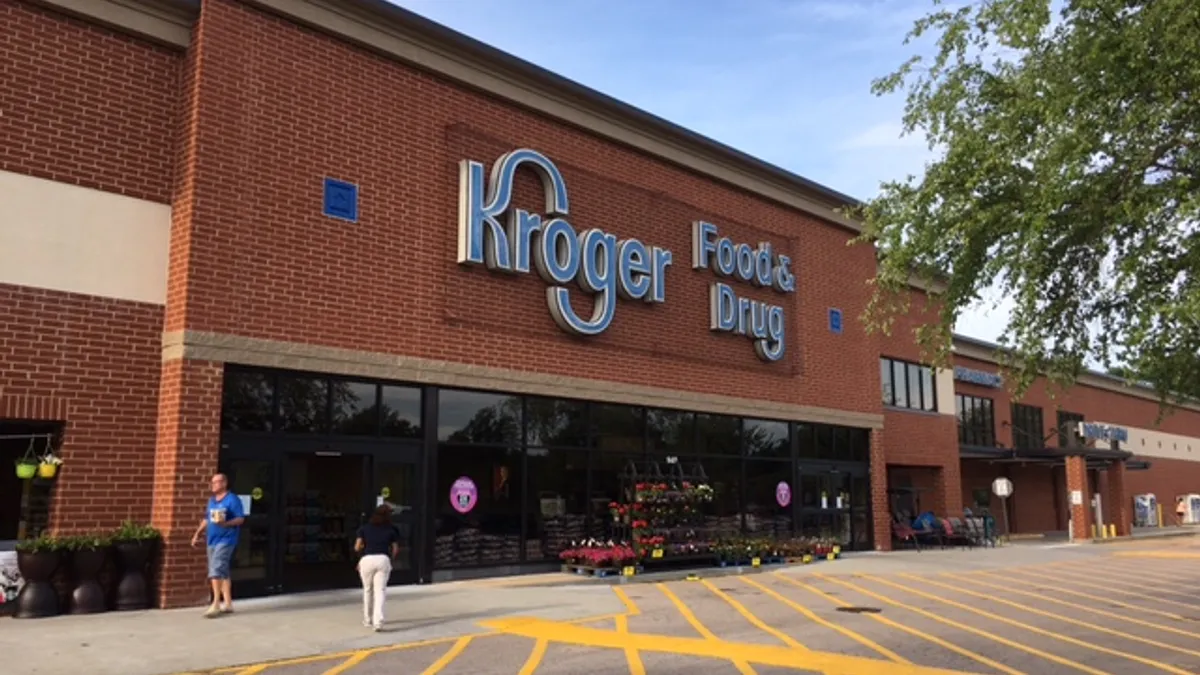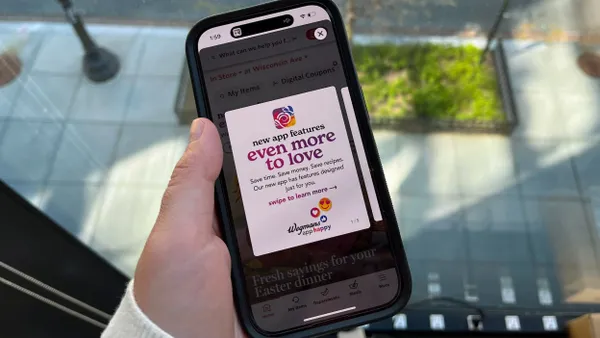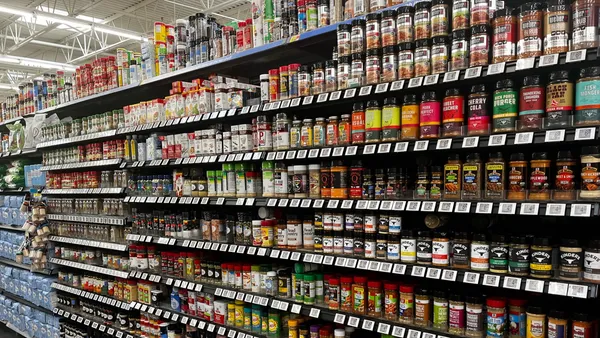Back in spring of 2016, Lucky’s Market looked like a great bet. Pre-Amazon Whole Foods was in disarray, and conventional grocers didn’t quite have the "locally grown" credibility to secure dedicated specialty shoppers. Add in the increased buying power of 20- and 30-something consumers, and the idea of a budget-friendly, unfussy natural and organic store seemed to be a food retailing bullseye.
Kroger certainly thought so, and made an undisclosed investment in the Colorado-based grocer. For a while, things looked good for both parties, with Lucky’s announcing just last year it would nearly double its store count. Lucky’s had also become a testing ground for the off-premise sale of Kroger’s Simple Truth products.
As we learned yesterday, the investment hasn’t panned out. And it was a more conspicuous exit than the companies would have liked, listed in Kroger’s earnings report along with a $238 million bill, a little more than half of which the grocery giant had to pay.
Lucky’s Market appears to be struggling. Its expansion plan has been scattershot, with stores thinly spread across 10 states ranging from Montana to Florida, said Neil Stern, senior partner with McMillanDoolittle. It frequently set up shop in markets that were already saturated with specialty competitors. In Florida, where Lucky's has 21 stores, it’s had to contend not only with Publix but with a raft of "specialty 2.0" contenders like Sprouts Farmers Market chasing after the same customers.
With only one or two stores in many of its markets, Lucky’s has struggled to build brand awareness, Stern said.
"If you’re going to scale up to 39 stores, this is not the way to do it," he told me.
Stern doesn’t see a clear path forward for Lucky’s. With competition tightening and no sensible acquirers on the hunt — Sprouts makes the most sense, Stern said, but it’s checking its own growth right now — he predicts at least a few store closures are on the horizon.
Meantime, Kroger’s divestiture looks bad. The investment came more than a year before the grocer launched Restock, but it has all the hallmarks of that strategy — bold, unconventional and forward-looking. If one of its big early bets failed to pay off, what does that say about Kroger’s ability to pick winners?
I actually think this is a good sign for Kroger. Its executives recognize the company needs meaningful contributions right now, and they’re willing to pull away from initiatives that aren’t panning out. Kroger could have stuck with Lucky’s. The chain serves up a great store experience to customers. I loved sipping and strolling my way through a store in my hometown of Louisville, Kentucky last year. It's also at the cutting edge of local and specialty sourcing — two areas where Kroger wants to keep improving.
Stern wonders if the Lucky’s exit indicates Kroger wants to simplify the many investments it’s made. For the company's sake, I certainly hope that's the case. Since it teamed up with Lucky’s, Kroger has gotten into a mess of different initiatives, including driverless delivery, restaurants, direct-to-consumer shipments, mini grocery stores, digital shelves, banking, healthcare and selling private label products in China.
There’s nothing wrong with pursuing growth opportunities, but Kroger’s strategy seems to be more flailing than focused. Setting a higher bar for what stays and what goes will allow Kroger to deploy its resources in a more thoughtful manner. Even more important than paring down its investments, Kroger has to have the leadership and internal systems in place to recognize and then execute growth plans for its most promising ones.
"The criticism is you have too many things going on to get them effectively executed," Stern said. “There’s probably going to be a little more focus on getting back to the basics and evaluating what’s working for them.”
Which investments look strongest? Looking specifically at meal offerings — a segment Kroger is rightfully determined to crack — I think the food hall concept on display at its "On the Rhine" location in downtown Cincinnati is a winner because it combines destination dining and grocery shopping, with omnichannel efficiencies built in. The chain's recent meal delivery pilot could also boost sales with the right execution. Brittain Ladd, a supply chain consultant who has advised Kroger in the past, said Kroger Delivery Kitchen has tapped into a major growth market with significantly higher margins than its traditional grocery business.
"Kroger needs to create an ecosystem that can meet the needs of their customers for all things food," he told me.
And then, of course, there's the automated warehouses Kroger is building with Ocado, a lumbering investment the grocer has to live with, for better or worse. Kroger has been criticized for slow build times and the staggering cost of the project, while executives have stressed the nimbleness and flexibility of Ocado's technology. It's a high-stakes bet for Kroger, and one that requires a focused strategy and few distractions.
Encouragingly, company executives have owned up to some early mistakes in its Restock strategy, including asking employees to do too much too fast. They've also said they want grocery — Kroger is a grocer, after all — to guide the company's strategy, as evidenced by its new food-focused marketing campaign.
It's a solid plan, said Stern. Now comes the hard part of executing it.





















